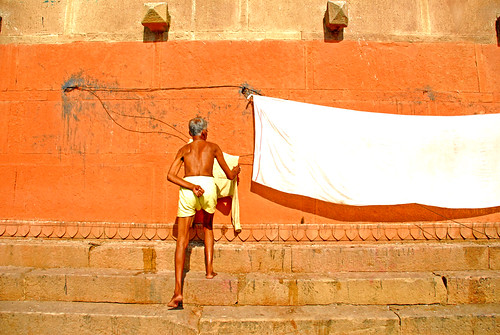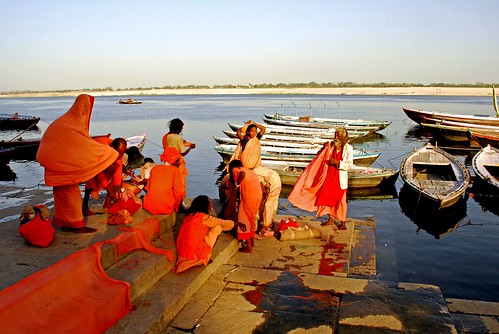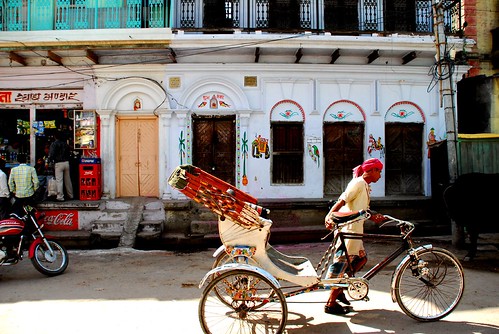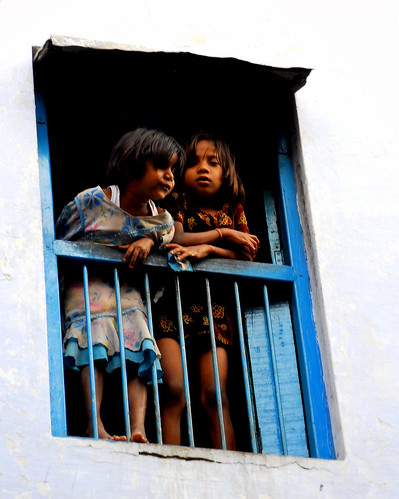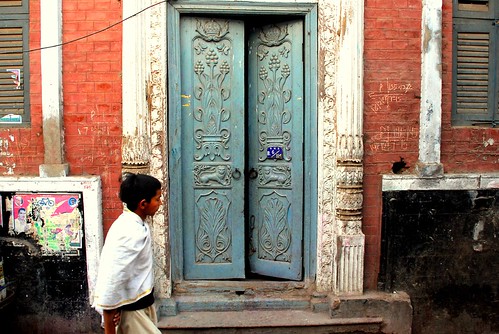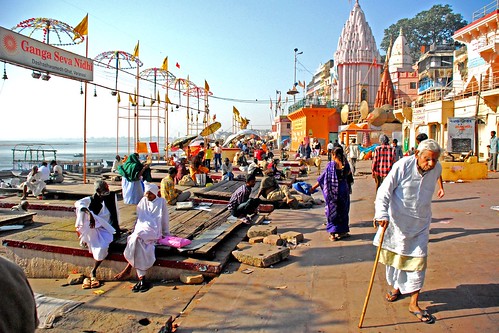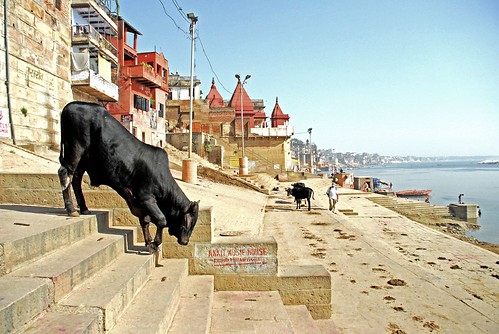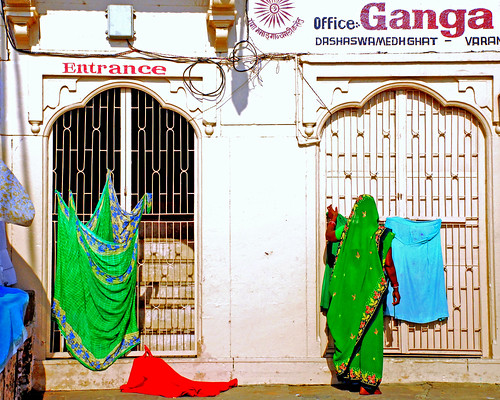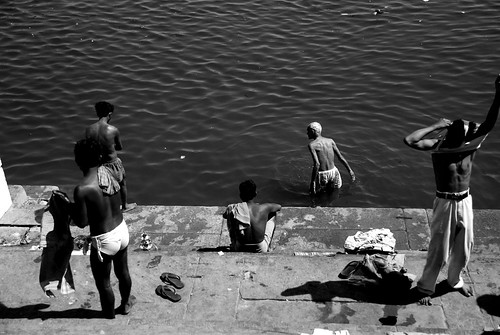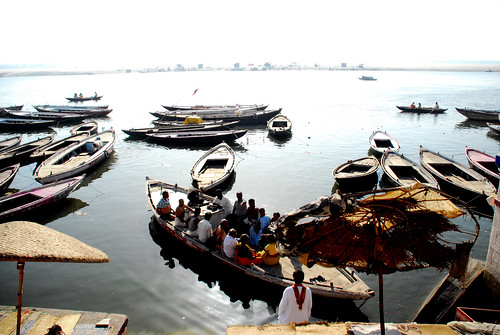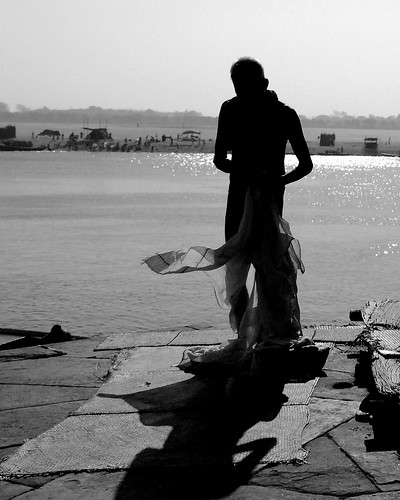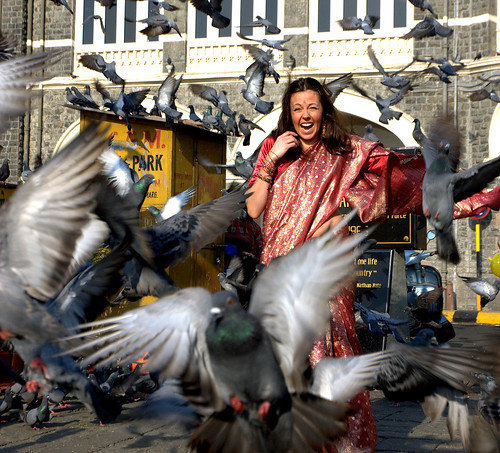![Petals, Toil and Business at Dadar’s Phulgalli [PHOTO 4] - The Lotus](http://farm1.static.flickr.com/145/436346460_4ebd585d73.jpg)
[6 a.m at Dadar's Phulgulli and it is already buzzing.]
In this congregated mass of humanity there is colour so vibrant and aromas so powerful that it would match that of any perfumery in the world. Eyes drown in the colour and your nose in the fragrance of a million flowers all stacked in baskets in multitude. A kaleidoscope for your senses. Dadar Phulgalli [flower-lane] takes your traditional Bombay smells of sweat, toil, paint, iron and turns them into the smell of marigolds.. Wipe your brow and you find petals in addition to sweat.
![Petals, Toil and Business at Dadar’s Phulgalli [PHOTO 2]](http://farm1.static.flickr.com/170/436338522_0949c7b207.jpg)
[Under the over Phulgulli in action]
Bombay’s entire economy is pinned around one ability- the ability to move its mammoth population from their suburban homes to their work places in the city. This is down to Bombay’s local train system with a miraculous efficiency; carrying millions of people each day. Where millions pass, commerce generally follows. I would describe it as a mobile mall. Each station has its bazaar and each bazaar its specialty. You just hop on to a train and simply sample the delights along the way, quite like a giant amusement park filled with 15 million people and a billion opportunities to explore. Dadar station in the geometric heart of Bombay’s main island is one such station surrounded by one such bazaar.
Dadar market is where you can get anything from green veggies to a two hundred rupee sonata ghadi [watch] to fake live strong bands [in any colour] to a pethani saree. In one such galli [lane] is Dadar’s phul/phool [flower] market. Roses, chrysanthiums, marigolds, jasmine, gladiolas, asters, lilies, gerberas, carnations are a few things that line its narrow walls. They were stockpiling roses as I arrived; some of the blossoms having recently worn little mesh caps, or condónes to keep them from erupting too soon. Ravi my guide for the morning tells me roses are really lab rats, bred to live in a factory and be fed by machine in giant greenhouses near Pune or Bangalore, gone are the day when they actually grew them outside. He adds with a smirk the business of flowers has become so industrialized that a flower's greatest asset these days is not its beauty or its fragrance but its durability as freight. I’m urged by one of shopkeepers to plung my face into bunches of phloxes and hyacinths, cooed over sweet peas, ravi on the other hand grins with pleasure when he spots some Esperance, a big pinkish variety of rose with subtle accents of green that is among his favorites.
![Petals, Toil and Business at Dadar’s Phulgalli [PHOTO6] - Maker of Garlands](http://farm1.static.flickr.com/187/437215774_8bea3fe419.jpg)
[The garlands spin]
![Petals, Toil and Business at Dadar’s Phulgalli [PHOTO 5] - Flower Power](http://farm1.static.flickr.com/173/436474472_4ee1a98c66.jpg)
[Flower Power]
Where do these flowers come from you ask ? Quite a few flower varieties come from Pune and Bangalore - two cities, which boast of the maximum number of greenhouses mainly because of their ideally temperate climes. These include the ubiquitous rose, carnations, and bird of paradise. Lucky bamboos are imported from Thailand, like Orchids. The merry marigold comes from Kolkata. Gladioli converge at Mumbai from all over the country, while Bangalore and Thailand again are hometown for lilies. Romantic rajnigandhas originate in Muzaffarnagar while tulips abound in the hills of Shimla and Kullu.
![Petals, Toil and Business at Dadar’s Phulgalli [PHOTO7] - Marigolds](http://farm1.static.flickr.com/183/437910858_c2e7946410.jpg)
[Marigolds]
''I just love how gritty and industrial it is here,'' ravi says to me, indicating the tempos double-parked, motors running, in the street blocking the traffic on tulsi pipe road and the guys in torn white banyans pushing handcarts. ''It's kind of like these are the raw ingredients, and then you go to the restaurant and have a meal. It's flowers on the hoof.''
As summer approaches Phulgulli is strangely refreshing. Carnations by the cartload; lilies by the bucket. The gerbera daisies come packed in what look like shirt boxes, their happy-face blossoms all looking outward, their stems dangling down like wires from the back of a computer. The roses are wrapped, 20 to a bunch, in squares of corrugated cardboard and then stacked, business end out, on rows of metal shelves. They look like bottle rockets at a fireworks store. Then there are cane baskets drowned in petals of very colour pinks, purples, oranges. Phulgulli itself is home to about 50 shops but a short distance away is the new wholesale flower market near Elphinstone which is home to over 700 stalls each doing over 100 kilos worth of business.
There is also a shop that sells fake flowers of silk and plastic -- ''permanent botanicals,'' as they're known in the trade -- and places that specialize in hard goods: vases, floral foam, spray paint and aerosol cans of artificial fragrance. How about a case of artificial butterflies or creepy-looking phony hummingbirds? They're here too, along with plastic ladybugs, grasshoppers and praying mantises.
![Petals, Toil and Business at Dadar’s Phulgalli [PHOTO 11] - Roses](http://farm1.static.flickr.com/148/437911792_a97410fc94.jpg)
Still farther down towards Elphinstone, at Associated flowers, the floor was littered with leaves and greenery, and some of the shelves were already empty. It was past 9 a.m., and the phulgalli was winding down. There were even some parking spaces, as the last few tempos loaded up and headed uptown, to hotels maybe, or to the kind of corporate offices that have a monthly flower budget. I walk away my senses overwhelmed under strain of all those flowers, the sights, the sounds, the colours all crammed under a flyover in Dadar.
![Petals, Toil and Business at Dadar’s Phulgalli [PHOTO 1] - Cartload of Flowers](http://farm1.static.flickr.com/179/436319551_9157b2544f.jpg)
I did buy some flowers,10 stems of orchids for 20 rupees [value]. The challenge for the day being getting them home to Bandra by train in a second class compartment. Today being Saturday I could easily find a space to stand and get them home without any scratches. I tell you this because they are happily smiling at me with their purple dog like faces from the glass vase on my dining table.
![Petals, Toil and Business at Dadar’s Phulgalli [PHOTO 9] - Mogra](http://farm1.static.flickr.com/176/437911274_b1bb1167d8.jpg)
[Originally Published in the Hindustan Times, Dated 29th March]

